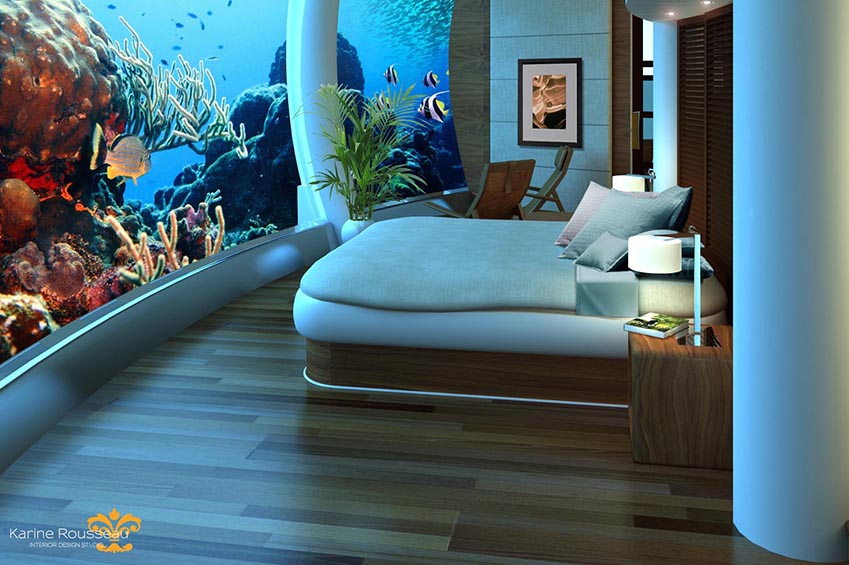Fourteen years after initial construction began on the Poseidon Undersea Resort in Fiji, an opening date still has yet to be set. However, more than 150,000 people have already registered to be the first guests.
Located forty feet under the sea and outfitted with 25 guest suites, the resort provides unbeatable panoramic views of the lagoon and surrounding sea life thanks to an acrylic glass material, similar to what is used in bulletproof barriers. Seventy percent of each exterior suite wall is made of acrylic. In April 2013, the Poseidon reported that they made advancements with their acrylic provider to utilize near optically perfect acrylic with seam joints less than 1mm thick (virtually invisible to the human eye).
The concept of underwater habitats started back in the 1960s, but mostly for research or exploration. The development of the Poseidon and the proposed underwater tennis court in Dubai are just a couple examples of the future of underwater living, provided for recreation or tourism.
Acrylic vs Glass in Underwater Architectural Applications
Unobstructed views are essential to the success of an underwater architecture design. However, materials used must be able to withstand the pressure of billions of gallons of water to ensure ongoing safety. Glass is not the material of choice in underwater applications because it must be very thick, which reduces visibility. Often, glass must be laminated with other materials in order to tolerate the extreme water pressure and it tends to have a greenish tint rather than the near optically clear properties of acrylic. In addition, acrylic has a much higher impact strength than glass and will not shatter if damaged, therefore reducing the risk of injury.
Acrylic has proven to be a valuable material in other water-related architectural installations as well. For example, most public aquarium windows, including the one installed behind home plate at Miami’s Marlins Park are made of acrylic. In residential applications, acrylic has been used to provide a viewing window between a kitchen and pool, as well as underwater skylights.
NEXT STEPS:
- Watch how we put various components of our bullet-resistant barriers to the test in this video
- Visit our blog for the latest industry news
- Follow us on Twitter, Facebook or LinkedIn
Image courtesy of www.poseidonresorts.com.


